Stephanie Stacy
Understanding the Unforeseen via the Intentional Stance
Nov 01, 2022



Abstract:We present an architecture and system for understanding novel behaviors of an observed agent. The two main features of our approach are the adoption of Dennett's intentional stance and analogical reasoning as one of the main computational mechanisms for understanding unforeseen experiences. Our approach uses analogy with past experiences to construct hypothetical rationales that explain the behavior of an observed agent. Moreover, we view analogies as partial; thus multiple past experiences can be blended to analogically explain an unforeseen event, leading to greater inferential flexibility. We argue that this approach results in more meaningful explanations of observed behavior than approaches based on surface-level comparisons. A key advantage of behavior explanation over classification is the ability to i) take appropriate responses based on reasoning and ii) make non-trivial predictions that allow for the verification of the hypothesized explanation. We provide a simple use case to demonstrate novel experience understanding through analogy in a gas station environment.
Modeling Communication to Coordinate Perspectives in Cooperation
Jun 03, 2021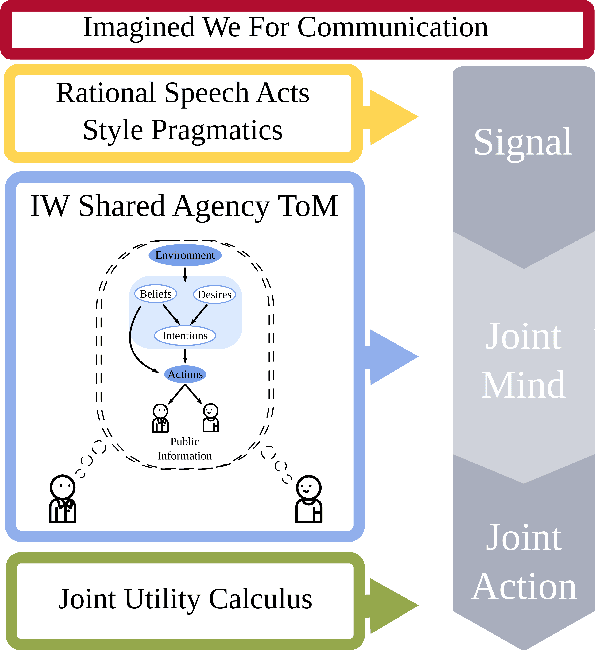
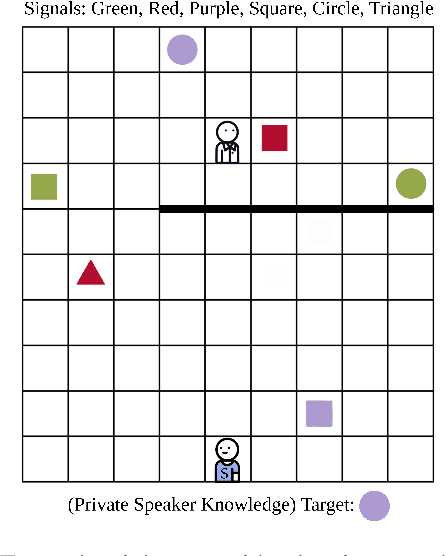
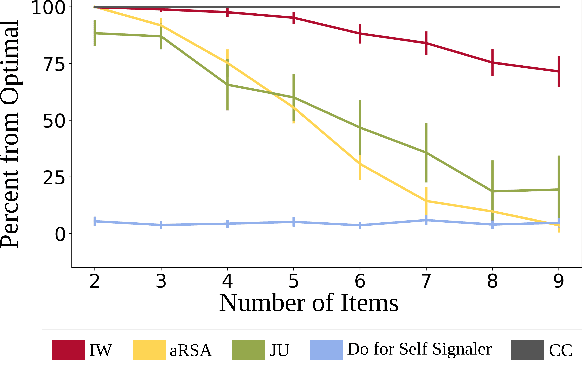
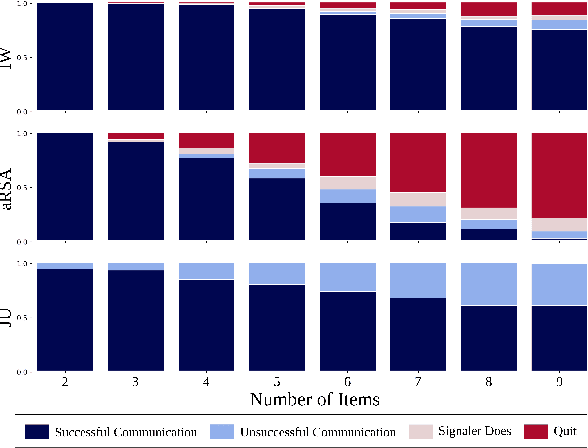
Abstract:Communication is highly overloaded. Despite this, even young children are good at leveraging context to understand ambiguous signals. We propose a computational account of overloaded signaling from a shared agency perspective which we call the Imagined We for Communication. Under this framework, communication helps cooperators coordinate their perspectives, allowing them to act together to achieve shared goals. We assume agents are rational cooperators, which puts constraints on how signals can be sent and interpreted. We implement this model in a set of simulations demonstrating this model's success under increasing ambiguity as well as increasing layers of reasoning. Our model is capable of improving performance with deeper recursive reasoning; however, it outperforms comparison baselines at even the shallowest level, highlighting how shared knowledge and cooperative logic can do much of the heavy-lifting in language.
Individual vs. Joint Perception: a Pragmatic Model of Pointing as Communicative Smithian Helping
Jun 03, 2021
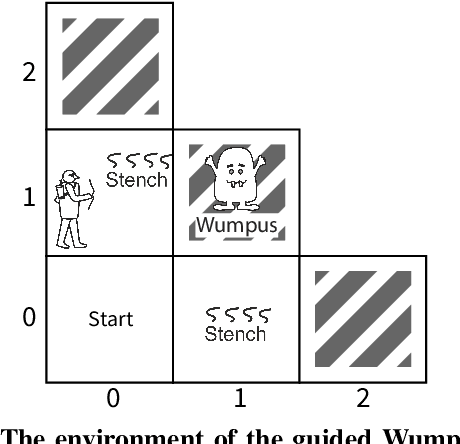
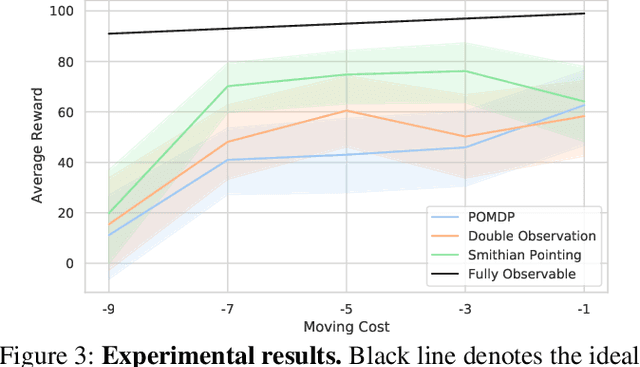
Abstract:The simple gesture of pointing can greatly augment ones ability to comprehend states of the world based on observations. It triggers additional inferences relevant to ones task at hand. We model an agents update to its belief of the world based on individual observations using a partially observable Markov decision process (POMDP), a mainstream artificial intelligence (AI) model of how to act rationally according to beliefs formed through observation. On top of that, we model pointing as a communicative act between agents who have a mutual understanding that the pointed observation must be relevant and interpretable. Our model measures relevance by defining a Smithian Value of Information (SVI) as the utility improvement of the POMDP agent before and after receiving the pointing. We model that agents calculate SVI by using the cognitive theory of Smithian helping as a principle of coordinating separate beliefs for action prediction and action evaluation. We then import SVI into rational speech act (RSA) as the utility function of an utterance. These lead us to a pragmatic model of pointing allowing for contextually flexible interpretations. We demonstrate the power of our Smithian pointing model by extending the Wumpus world, a classic AI task where a hunter hunts a monster with only partial observability of the world. We add another agent as a guide who can only help by marking an observation already perceived by the hunter with a pointing or not, without providing new observations or offering any instrumental help. Our results show that this severely limited and overloaded communication nevertheless significantly improves the hunters performance. The advantage of pointing is indeed due to a computation of relevance based on Smithian helping, as it disappears completely when the task is too difficult or too easy for the guide to help.
 Add to Chrome
Add to Chrome Add to Firefox
Add to Firefox Add to Edge
Add to Edge